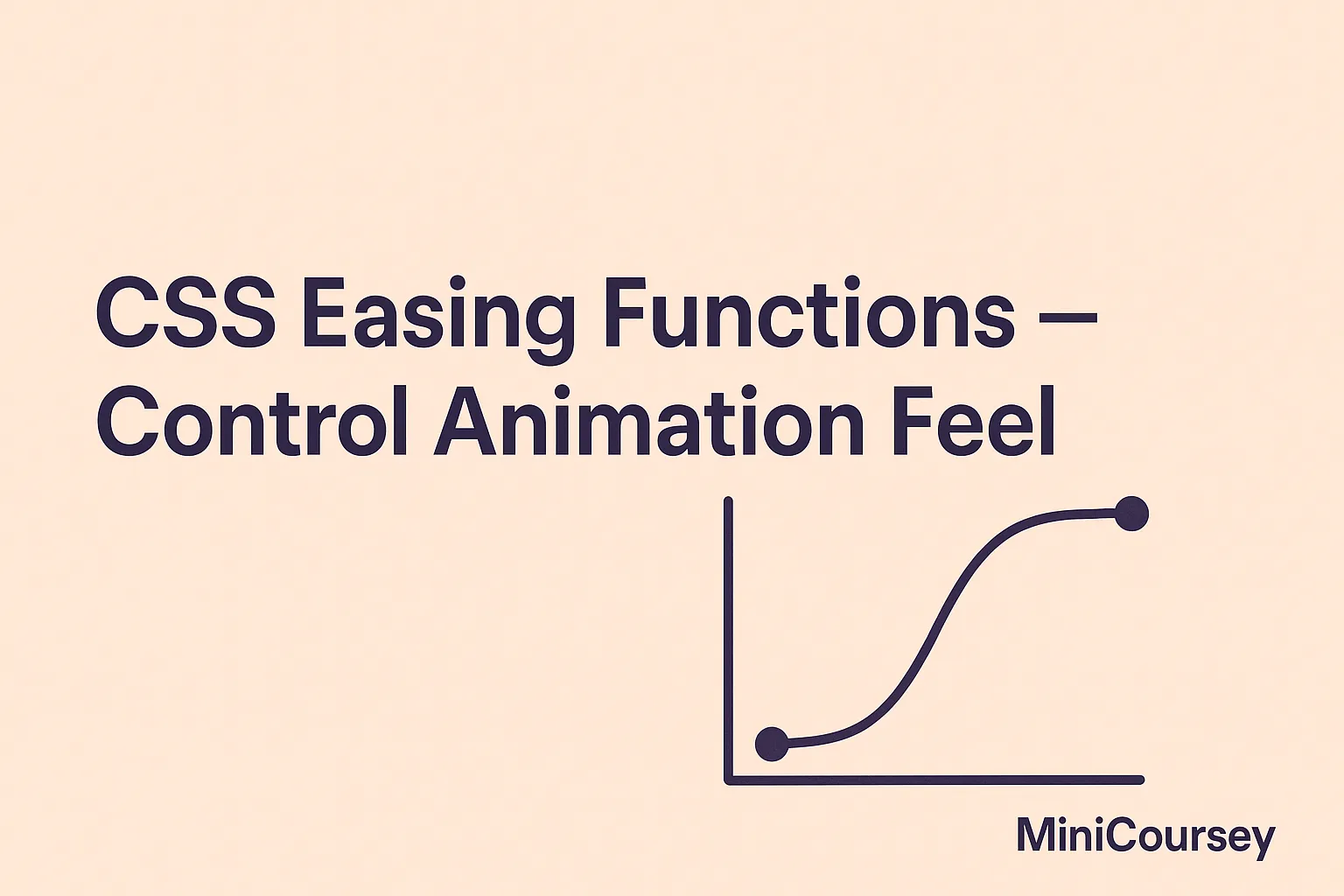Why do some animations feel snappy and natural while others feel robotic? The secret is easing functions! Easing controls the speed of an animation over time — not just its start and end points. By choosing the right easing, you can make animations look smoother, more realistic, and more delightful. In this MiniCoursey quick guide, you’ll learn how CSS easing functions work, the most common types, and how to use them to level up your animations.
What Are Easing Functions?
Easing functions define how an animation progresses. Instead of moving at a constant speed, the motion accelerates and decelerates for a more natural look.
Basic Syntax
Use the animation-timing-function or transition-timing-function property to set easing.
.box {
transition: transform 0.5s ease-in-out;
}
.box:hover {
transform: scale(1.1);
}
In this example, the scale-up effect uses ease-in-out for smooth start and end.
Popular Easing Keywords
linear— Same speed all the way through (robotic).ease— Slow start, fast middle, slow end (default).ease-in— Starts slow, speeds up.ease-out— Starts fast, slows down.ease-in-out— Slow start and end.
Custom Cubic Bezier
For advanced control, use cubic-bezier() to define custom easing curves.
.box {
transition: transform 0.5s cubic-bezier(0.68, -0.55, 0.27, 1.55);
}
This example creates a bouncy, elastic feel.
💡 Pro Tip: Use tools like cubic-bezier.com to experiment with custom curves visually.
⚠️ Common Mistake: Don’t stick with
easefor everything — the right easing makes a big difference!
FAQ
Q: Do easing functions work with keyframes?
A: Yes — you can set easing on each keyframe segment for complex timing.
Q: Can I animate multiple properties with different easings?
A: Absolutely! Use multiple transitions or keyframes for granular control.
Related Link
👉 Check out previous: CSS Keyframes — Build Custom Animations
Where to Learn More
Check MDN’s easing docs for all options. Experiment with easing to add polish and personality to your designs!
Conclusion
Congrats — you now know how to use CSS easing functions for smooth, natural animations. It’s a tiny detail that makes a huge difference!
✨ Bookmark MiniCoursey for more quick & free mini courses!

